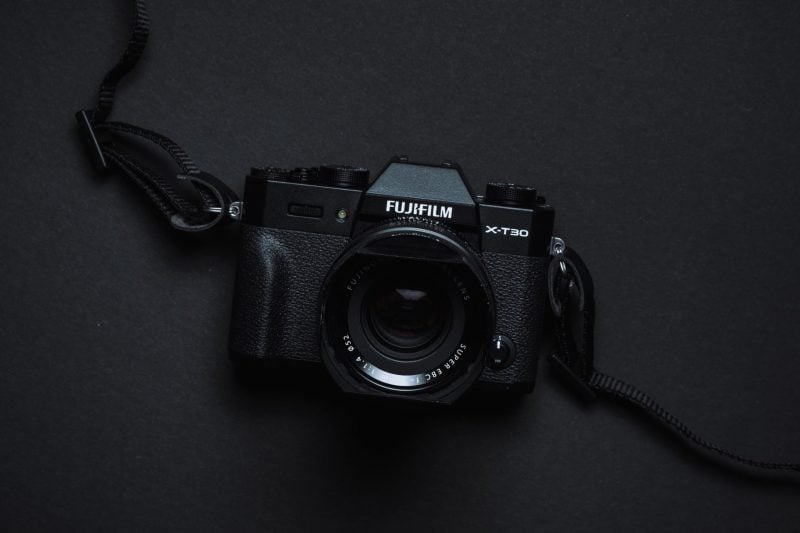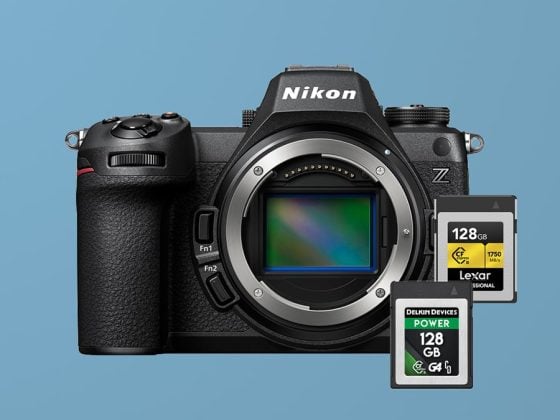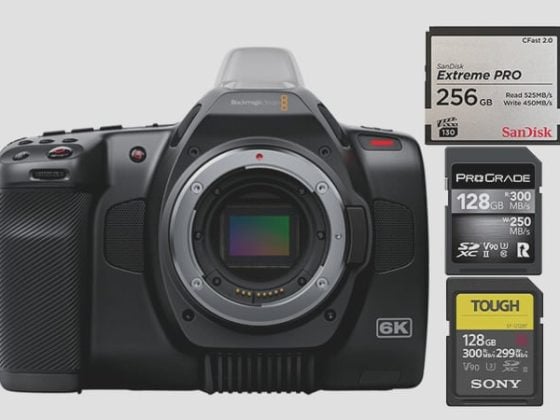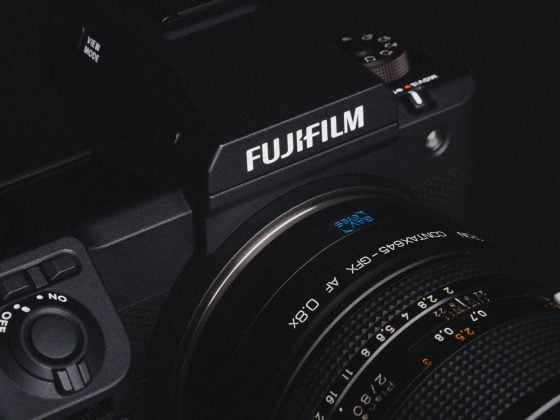Like with the Fujifilm X-T20, Fujifilm stipped out some of the more advanced features found in the flagship X-T3, so they could make a smaller, lighter, and less expensive but still incredible camera.
They’ve reduced the memory card speed class to UHS-I with only a single card slot. To adjust for the slower speed, they limited video recording times to 10 minutes and reduced the bitrate to 200mbps.
Recommended Memory Cards Fujifilm X-T30
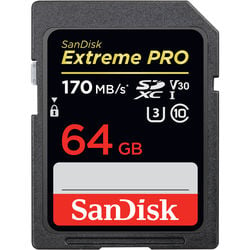 Here is a list of the best and fastest memory cards for the X-T30 with the in-camera speeds included.
Here is a list of the best and fastest memory cards for the X-T30 with the in-camera speeds included.
Usually, UHS-II memory cards are slightly faster. Still, they are not actually running at UHS-II speeds in camera, and the UHS-I cards will give you a much better performance-to-cost ratio.
You can also check the full list further down to see how each memory card performed in-camera.
| Cards | In-Camera Speed | Price |
| Sandisk Extreme 170MB | 68.35 | Amazon |
| Sandisk Extreme Plus | 68.27 | Amazon |
| Delkin Advantage | 64.09 | Amazon |
Memory Card Speed Chart – Buffer Benchmarks
Use this chart to see the fastest cards for your needs.
You can click and sort the tables to make it easier to follow.
One thing to understand is that I test these cameras buffer speed as the camera is filling the buffer and stop when the buffer is full. This simulates how the camera is actually being used in the real world.
The X-T30 can write faster to the memory cards than the data shows here because there is always a slight slowdown as the camera does a little work on each RAW file. This is where that bottleneck comes in with all cameras.
You can almost certainly bet that if you were to just transfer a large file, the buffer would be able to transfer to each card at their USB speeds with this camera. However, since each RAW file needs a little processing and conversion, there is a slight delay before each file is transferred.
Memory Card-Related Specs
|
Sensor: 26.1MP APS-C X-Trans BSI CMOS 4 Sensor |
Best SD Memory Cards For 4k Video | Fujifilm X-T30
Fujifilm has reduced the X-T30’s 4k bitrate to 200mbps to allow proper performance with UHS-I memory cards. The X-T3 can record at 10-bit 400mbps.
200mbps is still great, especially compared to the competition. It’s still twice the bitrate of any Sony or Nikon camera, and you can still record at 4:2:2 10-bits.
Compatibility
Based on how they performed in my tests, most of the cards tested here should record 200mbps 4k video without any issues. You should always go with a U3 memory when shooting 4k.
U3 memory cards are designed for a guaranteed minimum data stream of 30MB/s, and 200mbps translates to 25MB/s. So, as long as you buy one of the U3 memory cards, you’ll be able to record 4 K video in the X-T30 without any issues.
What Size Memory Card To Buy
Choosing the right memory card size will depend on how you plan on using the X-T30, so the best I can do is share my experience.
If you plan on buying the X-T30 to use mostly for shooting stills, then 64GB cards are great. You’ll almost never use 64GB in a full day of shooting, which allows you to even go a few days before needing to clear off the card if needed.
If you plan on shooting a lot of video, you’ll likely want a 128GB card or larger. 4k 200mbps translates to about 25MB/s, which can quickly fill up a card. If you’re coming over from Sony or Nikon, your video files will be twice the size of this camera, and it will eat through cards fast.
I would even say if you’re shooting a lot of stills with a lot of video mixed in, you may also want a 128GB card. When I’m shooting video + stills while traveling, I can often push the limits of a 64GB card.
What All The Symbols Mean
There are a lot of codes written on each card, and it’s important to know what some of these letters and numbers mean since they will affect performance, especially if you’re shooting a video.
UHS-I vs UHS-II
This is an important speed class since only some cameras can take advantage of UHS-II technology. Buying a UHS-II card is a huge waste of money if your camera does not support it.
UHS-II cards have a second row of pins that allows for up to triple the data rate of UHS-I cards.
The Fujifilm X-T30 only has UHS-I technology, so any UHS-II card will run off only the first row of contact pins at UHS-I speeds.
SDHC vs. SDXC
On some cards you’ll see SDHC or SDXC, this has to do with the file system.
SDHC only supports a 32-bit file system, and SDXC supports a 64-bit file system. Fat-32 or ExFat.
32GB memory cards and smaller ones are always SDHC, and 64GB cards and bigger ones are always SDXC.
The big difference here is if you’re using SDHC (32-bit Fat32), your video clips will be broken into 4GB chunks.
If you’re using SDXC (64-bit ExFat) cards, your video clips will record up to the size of the record limit, which is 10 minutes on this camera.
U1, U3, V30, v60, v90
The Fujifilm X-T30 only utilizes UHS-I memory cards, so it cannot take advantage of the v60 and v90 speeds of UHS-II cards. But here is what these numbers mean.
Class 10 or U1 – Minimum record speed 10MB/s
U3 / V30 – Minimum record speed 30MB/s
V60 – Minimum record speed 60MB/s
V90 – Minimum record speed 90MB/s
These numbers are important and something to remember if you’re serious about video. Since the X-T30 writes video at 25MB/s, a U3 card will guarantee that your card is always able to keep up with that spec, so long as it’s not defective.
A1, A2
You see this written mostly on micro SD memory cards but it’s found its way onto a few SD cards like the Kingston Canvas React.
A1 and A2 memory cards have a built-in cache to allow for improved random read and write access. Cameras always read and write sequentially so it’s a little irrelevant here. But, if you were to use a card in a tablet or laptop that you wanted to run apps off of, then an A1 or A2 card will greatly increase performance.
Best Memory Cards Fujifilm X-T30 | Conclusions
The Fujifilm X-T30 is an incredible camera with some amazing capabilities. While it does not support UHS-II memory cards like its bigger brother, the Fujifilm X-T3, you’ll still get some incredible performance and capabilities with UHS-I cards.
Be sure to buy a card with at least a U3 rating to take advantage of 4k 200mbps video and the fast 20fps continuous ES continuous burst speeds. Not all U3 cards are created equal, so be sure to buy the fastest card possible. Use the chart above to find the best UHS-I SD memory cards for the Fujifilm X-T30.
| **This website contains affiliate links. We will earn a small commission on purchases made through these links. Some of the links used in these articles will direct you to Amazon. As an Amazon Associate, I earn from qualifying purchases. |

